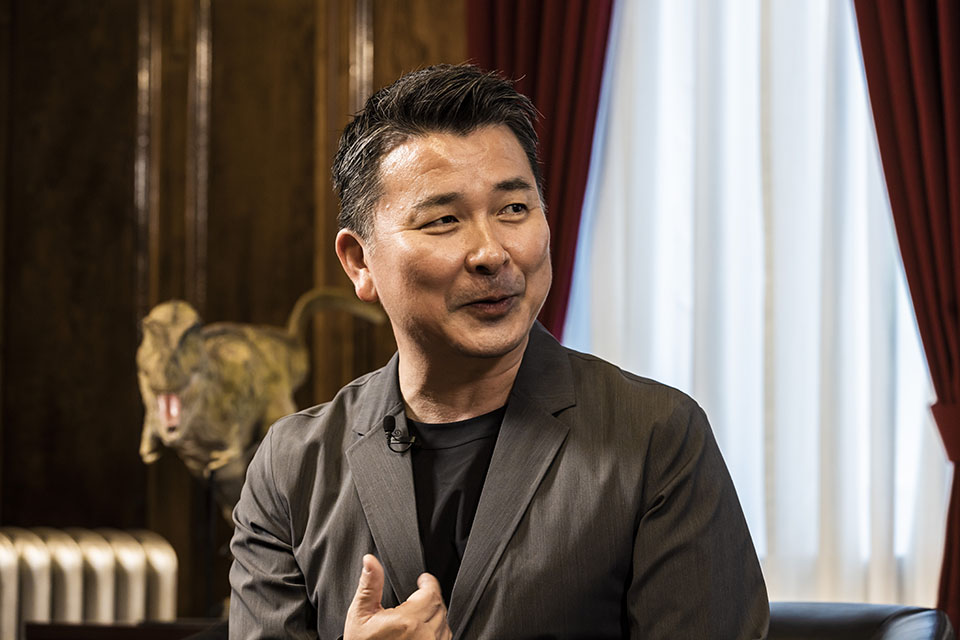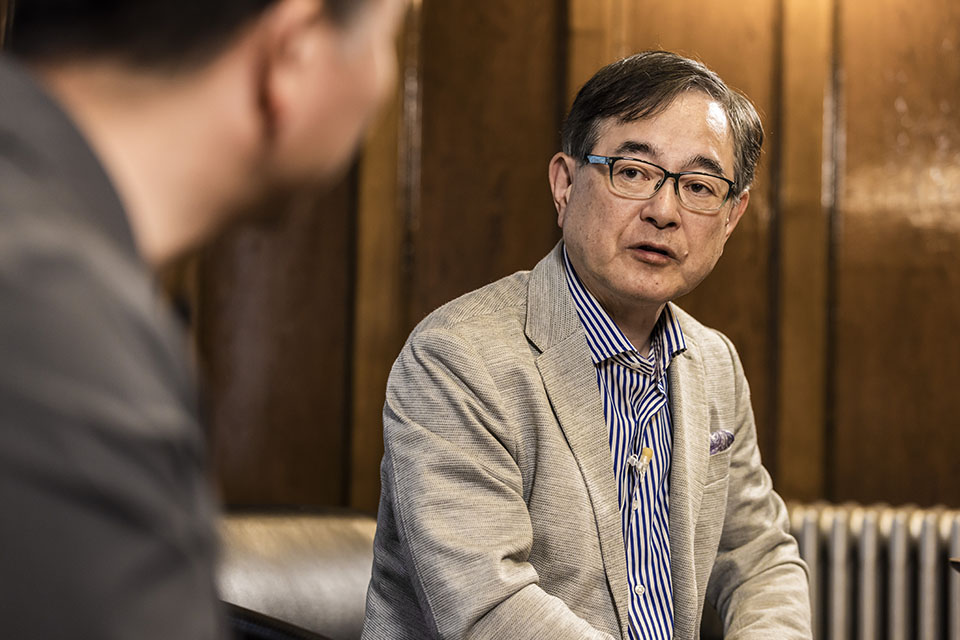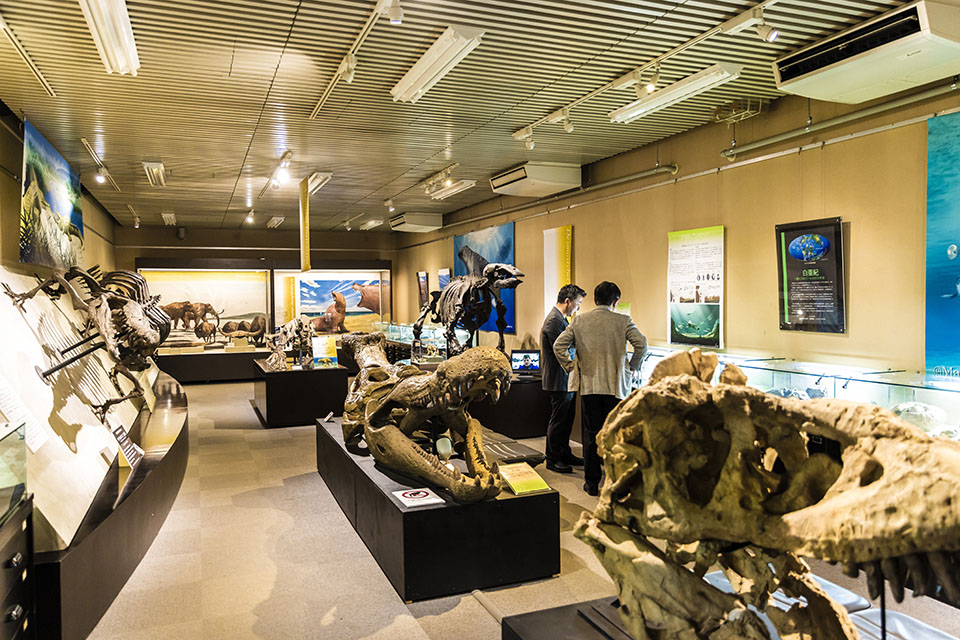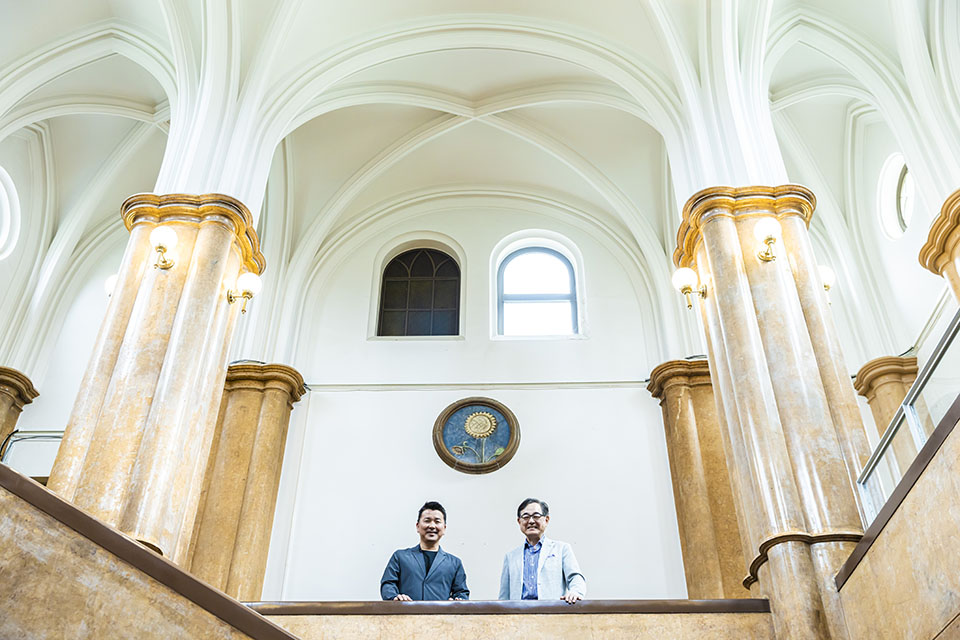The President’s Adventures in Knowledge-Land Vol. 1 “Five Values of Dinosaur Research”
Research Highlight | December 26, 2023
The President’s Adventures in Knowledge-Land Vol. 1 “Five Values of Dinosaur Research” video
The President’s Adventures in Knowledge-Land is a series in which Hokkaido University president Kiyohiro Houkin, who is a neurosurgeon, visits fascinating researchers at Hokkaido University. In the first session entitled “Five Values of Dinosaur Research,” he talked with Professor Yoshitsugu Kobayashi aka “Dinosaur Kobayashi.” Kobayashi spearheaded the excavation and research of a new dinosaur species, Kamuysaurus japonicus, discovered in Mukawa Town, Hokkaido, Japan. They discussed Hokkaido University’s research environment, where field research is one of the strengths, as well as future prospects for Hokkaido University Museum.
A boy who loved Buddhist statues
Houkin: I would love to hear why you were attracted to this field of study. I heard that you are from Fukui Prefecture, so I guess that you have been interested in this field since childhood.
Kobayashi: To tell the truth, I was not a “dinosaur boy” at first. As an elementary school boy, I liked Buddhist statues. However, since there were many dinosaur fossil discoveries in Fukui Prefecture, I began participating in excavations during my first year of high school, which led to my path to dinosaur research.
Houkin: You liked Buddhist statues?
Kobayashi: Buddhist statues and dinosaurs might seem completely unrelated. But as a child, I liked feeling the time that has elapsed between the statues created centuries ago and my present self. With dinosaurs, they are simply much older, tens of millions of years ago; but it is the same feeling.
Houkin: Was there any opposition from your parents to becoming a researcher?
Kobayashi: My parents only said, “Whatever you do, be useful to other people,” and, “You can do any kind of research and anything you like but do it for the sake of others.”
Houkin: What do you enjoy the most in your work?
Kobayashi: When I alight from the helicopter in Alaska or the Gobi Desert, I realize that I might be the first person ever to arrive there in search for dinosaurs. My first step might feel like the first step on the moon. Just like Hokkaido University’s “Frontier Spirit,” I am the first person to do the survey and make discoveries there; and I am also delighted to deliver this information to everyone.
Houkin: That’s exactly the feeling of pioneering something. You can’t get that pleasure anywhere else.
Kobayashi: My research actually involves many aspects. Put simply, I look into the process of macroevolution, like how dinosaurs evolved into birds. By looking at the digestive system, brain, wings, parental behavior, etc., I want to know how they evolved from reptiles to birds. For another research topic, I go to Alaska, Canada, Mongolia, and Uzbekistan to investigate what happened on Earth 70-90 million years ago, just before the meteorite impact.
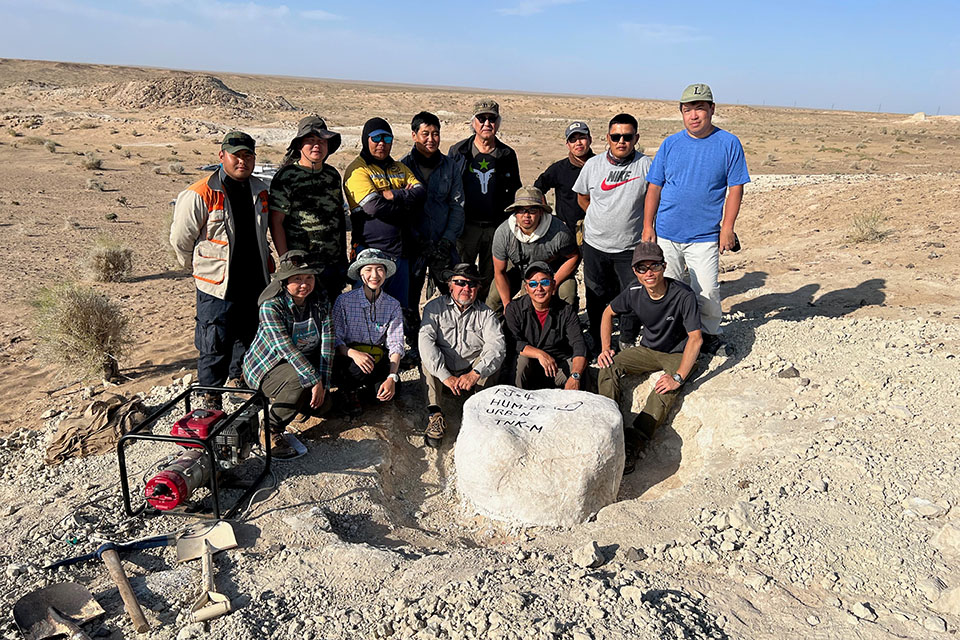
Japanese-Mongolian excavation team. The white mass in the foreground is a dinosaur fossil embedded in a plaster for transportation. Kobayashi is second from the right in the front row.
Houkin: Why do you look into the digestive system?
Kobayashi: My laboratory’s research motto is “to do simple, easy-to-understand research.” I tell my students to do research that can be summed up in simple words. For me, it is “evolution of diet.”
Houkin: I see. So, understanding the evolution of dinosaur from their diet.
Kobayashi: In addition to the digestive system, the brain is also involved. I wish to know what they ate and how that shaped their world and ecosystem. The pursuit to understand that aspect of evolution has been my long-term research theme.
Field research as Hokkaido University’s strength
Houkin: Hokkaido University has traditionally been strong in field research, as seen in the Fisheries Science and Agriculture faculties.
Kobayashi: Eighteen years have passed since I first came to Hokkaido University, and I have been able to do any kind of research that I like. The students also can conduct research freely. For that reason, I truly believe that Hokkaido University is one of the best universities in Japan.
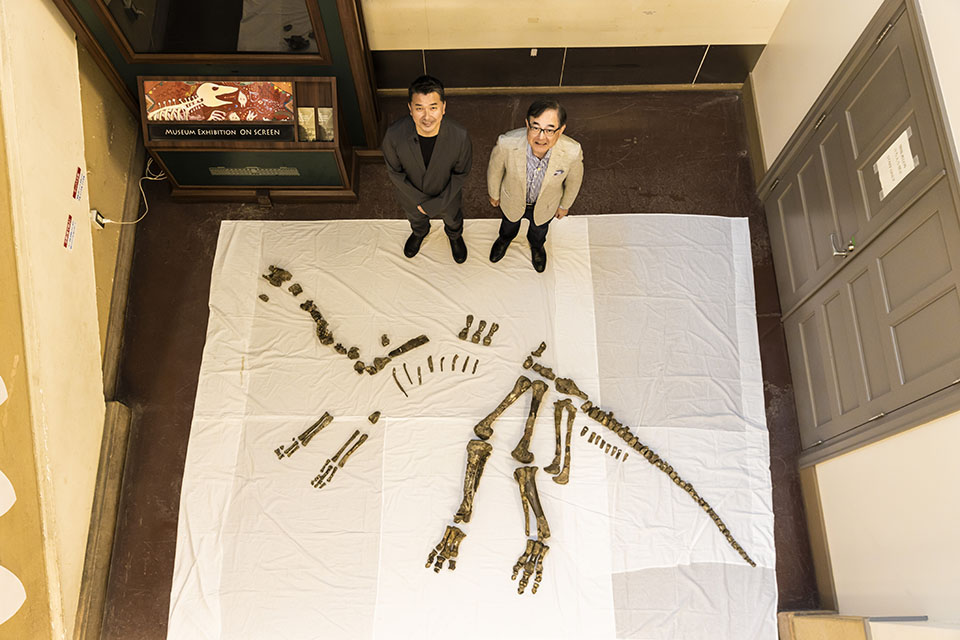
A full-body skeletal specimen of Nipponosaurus, the first dinosaur excavated and studied by Japanese researchers. It was named in 1936 by Professor Takumi Nagao of Hokkaido Imperial University (now Hokkaido University).
Houkin: I am delighted to hear that. What tools do you use in your fieldwork?
Kobayashi: The tools are not at all cutting-edge; they are rather primitive, such as a hammer. It is physically-demanding work. We actually use heavy machines and rock drills, too. With small items, such as for removing tiny bits, I always use dental picks, like what dentists use.
Houkin: Do you encounter wild animals in your fieldwork?
Kobayashi: I sometimes go to Alaska where grizzly bears often appear. I could encounter grizzly bears up to seven times a day. So, I use a set of binoculars to keep an eye out for bears. And if one appears, I have a safety whistle for that. Many times, I saw a grizzly bear appearing right before me, and on such occasions I scared it off with my shotgun. It became a part of my daily life.
Houkin: Do you also use modern equipment?
Kobayashi: I operate a drone to gather all sorts of data from the air. With that, we can take pictures and data from the air and construct 3D structures, which could not be done easily in the past.
Hokkaido University Museum to share the accumulation of knowledge
Houkin: I think appearing in the media to make people aware of our activities is an important mission.
Kobayashi: I have many students approaching me wanting to do research on dinosaurs. I keep telling them that doing research is not the only way to contribute to the field of dinosaur study. Media is one way of doing it. I have four graduates from my laboratory who have become directors at NHK (Japan’s public broadcasting service).
Houkin : So it is not only researchers who can contribute to research.
Kobayashi: Actually, I don’t like appearing in the media, but doing so can convey the appeal of dinosaurs. And if the name of Hokkaido University is mentioned, the University’s appeal will also be conveyed. So, I work closely with the media.
Houkin: You have been appointed as the deputy director of the Hokkaido University Museum, which I believe to be one of the top university museums in Japan.
Kobayashi: I agree. Before the coronavirus pandemic, we reached over 200,000 visitors per year. I believe that, by having more and more people coming and sharing Hokkaido University’s activities, appeal, and pool of knowledge, there will be more young people joining the University. That kind of cycle is beginning to form.
Houkin: The Museum presents the University’s research in an easy-to-understand manner to the public for which I find the Museum as a model that the University aspires to be.
Five Values of Dinosaur Research
Kobayashi: I believe that there are 5 values in dinosaur research. First, there is an inherent scientific value in dinosaurs, which is what we are studying and on which we are publishing papers. The second is the educational value, which is not just for students and graduate students but also for lifelong learners; different kind of volunteers who are learning things through dinosaurs.
Houkin: Citizen science, right?
Kobayashi: Yes! Next is the inherent historical value. For instance, there are national treasures and cultural heritage whose values are not convertible to money. The last remaining two are PR value and economic value. If these five values are fulfilled, I believe that my dinosaur research will take form.
Houkin: I am surprised that you have such ideas. I thought you would not talk about economy.
Kobayashi: Economy is indeed important. By balancing not only research but also the educational, economical, and PR values: like my parents advised, I continue to do things for the benefit of others.
Houkin: That’s exactly what is important for sustainability. I think Hokkaido University has been weak in the past in creating such a sustainable system, submitting it to society, and questioning its value. I would love to do this from now on.
Post-dialogue
Kobayashi: I also wish to do more for the University; to have more students coming to the University and to convey the charm of Hokkaido University. Since I found the president is on the same page, I hope that from now on, together with the Museum, we can do whatever we can for Hokkaido University.
Houkin: Dr. Kobayashi is not only motivated by his own interests, but he is also looking at the University as a whole. I think he has a very good balance. I look forward to talking with more researchers at Hokkaido University.

